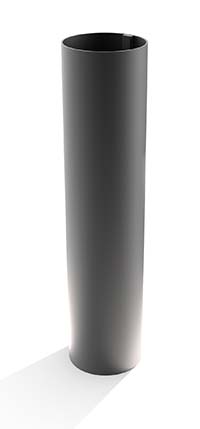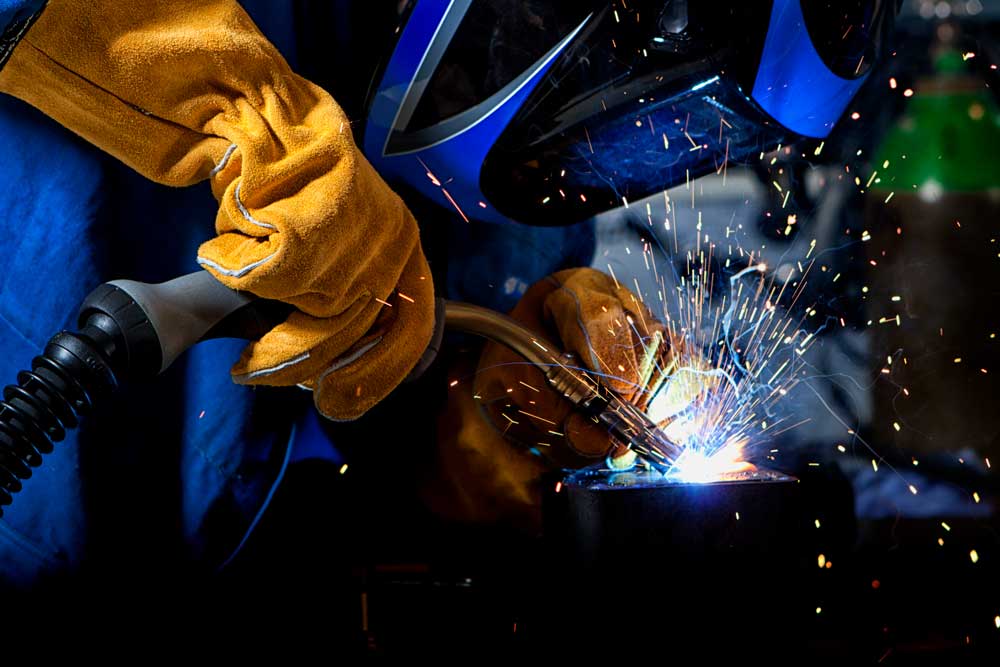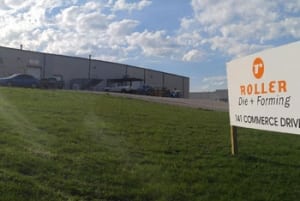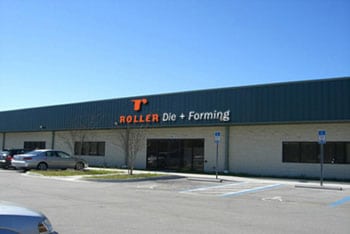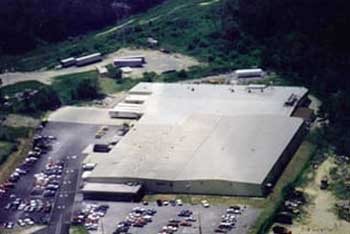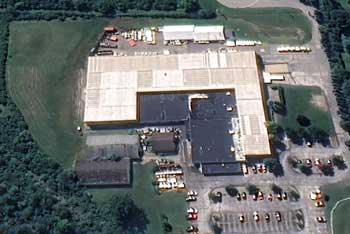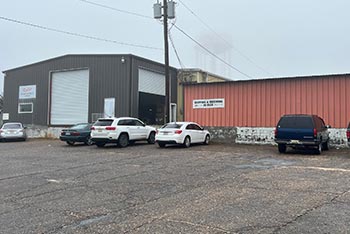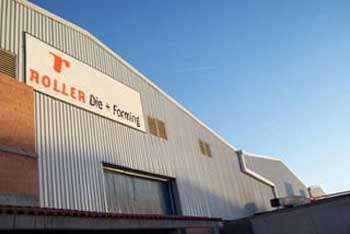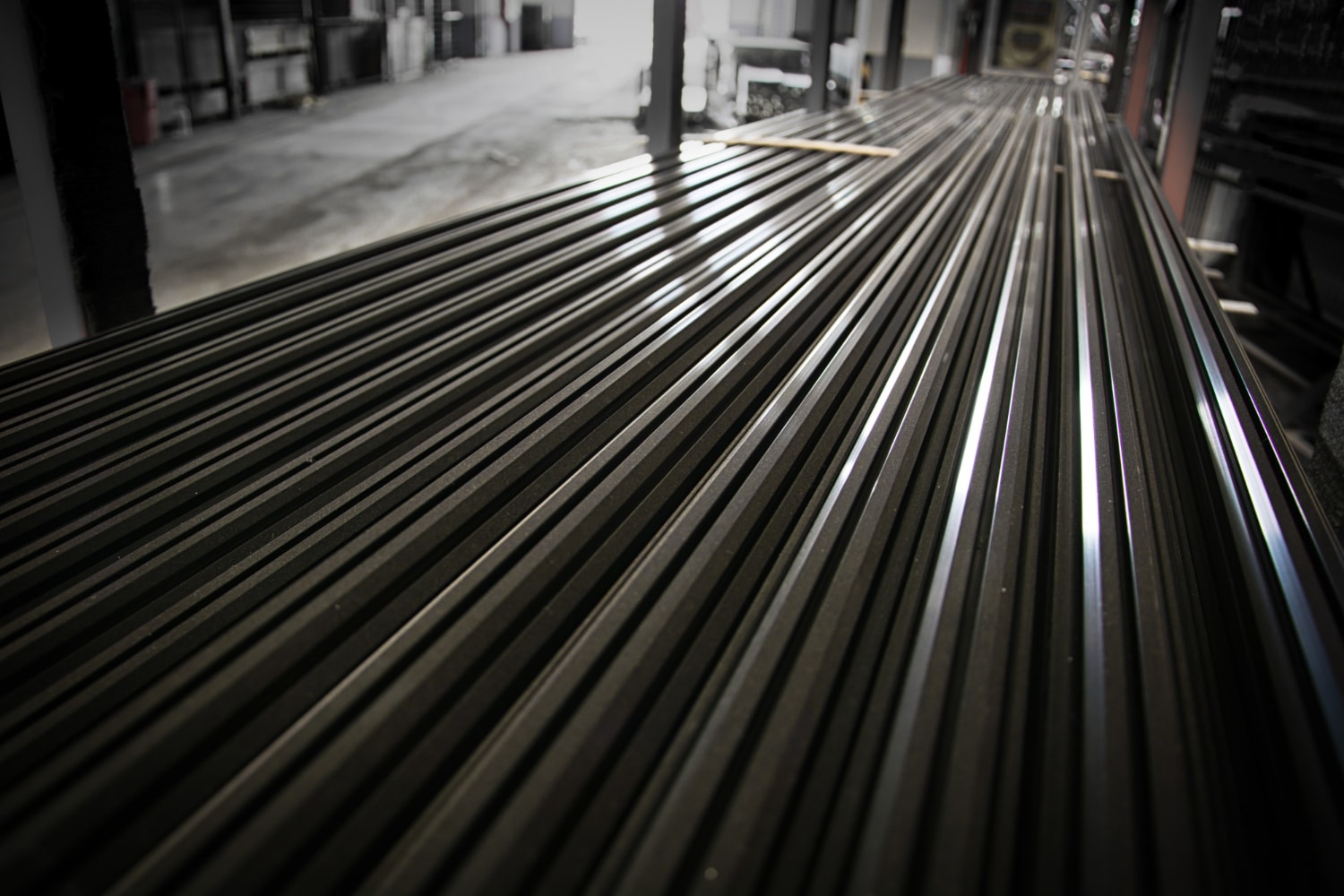Unlocking Custom Roll Forming’s Potential: A Handy Glossary of Key Industry Terms
As a manufacturer, delving into the world of custom roll forming can be a game-changer for your production processes and product quality. However, the custom roll forming industry comes with its unique set of terms and phrases, which may be unfamiliar to many manufacturers. Understanding these terms is essential for clear communication when working with a roll forming partner, allowing for more streamlined collaboration and achieving the desired outcomes.
In this glossary, we’ll be covering a range of key terms and phrases used in custom roll forming, from fundamentals like roll and die to complex concepts like progressive and line dies. Our goal is to help you familiarize yourself with the language of custom roll forming, ensuring you can navigate the process with confidence and maximize the benefits offered by this versatile manufacturing technique.
Arming yourself with industry knowledge will empower you to make more informed decisions, assess design feasibility, and optimize your production processes. With a better understanding of the terms used in custom roll forming, you can work alongside your roll forming partner to produce high-quality, reliable, and cost-effective components that meet your unique manufacturing needs and set you up for success.
Let’s dive into the world of custom roll forming terminology and explore the essential terms you need to know as a manufacturer.
Basic Components of Custom Roll Forming
Roll Forming Machine
This is the primary piece of equipment used in the custom roll forming process. It consists of a series of roll forming stations, each containing a set of rollers or ‘rolls,’ which progressively shape the metal material into the desired profile. Typically, a roll forming machine is accompanied by auxiliary equipment such as a decoiler or uncoiler to handle the raw material, a straightener to ensure the metal strip remains flat, and a cut-off or punching system to produce the finished roll-formed components.
Roll (or Roller)
A cylindrical tool, typically made of hardened steel or carbide, that is mounted onto the roll forming machine’s spindle. The roll has a precisely shaped groove or profile, which sequentially deforms the metal material passing through the roll forming stations. Multiple rolls, in pairs or sets, work together within each station to achieve the desired cross-sectional shape of the roll-formed component.
Die
A die is a tool used in various manufacturing processes, including roll-forming, extrusion, and stamping. In custom roll forming, the term ‘die’ is often used interchangeably with ‘roll.’ The die or roll bears a specific shape or profile, which is transferred to the metal material as it passes through the roll forming stations.
Key Roll Forming Processes and Techniques
Progressive Dies
In the roll-forming process, progressive dies are a series of integrated die stations arranged in a linear fashion along the roll forming machine. As the metal strip feeds through the machine, each die station progressively contributes to the part’s shaping, resulting in the final profile. Progressive dies are advantageous for high-speed production and can often incorporate additional features such as hole punching or cutting during the roll-forming process.
Line Dies
Line dies, or single station dies, are dies that perform only one operation or form per station in the roll-forming machine. Each die set is assembled in a linear progression, with each station completing a specific shaping operation on the metal material. Line dies are best suited for applications that require complex bend sequences or the production of large, intricate components.
Pre-Punching and Inline Punching
Pre-punching refers to the process of performing various hole punching, notching, or cutting operations on the metal material before it enters the roll-forming machine. This technique is sometimes preferred when the part’s features are too complex to execute inline during the roll-forming process.
In contrast, inline punching involves performing punching, cutting, and other operations on the metal strip as it moves through the roll-forming machine. This method can increase production efficiency, as multiple processes are completed simultaneously, reducing material handling and production times.
Materials Used in Custom Roll Forming
Carbon Steel
This is a popular material used across various industries, thanks to its balance of strength, ductility, and cost-effectiveness. Carbon steel contains a mixture of iron and carbon, which properties can be altered by adjusting the carbon content. In custom roll forming, carbon steel is commonly chosen for its versatility, wide range of possible shapes, and excellent formability.
Stainless Steel
Stainless steel is a corrosion-resistant variant of steel, due to the presence of chromium in its composition. Custom roll forming can accommodate various grades of stainless steel, offering excellent strength-to-weight ratios, high corrosion resistance, and a sleek aesthetic appeal. Stainless steel is a popular choice for applications requiring durability, extended service life, and aesthetic considerations.
Aluminum
Aluminum is a lightweight yet strong metal that is often used in custom roll forming. It offers high corrosion resistance, excellent formability, and a range of surface finishes. Aluminum is often considered for applications where weight reduction, structural strength, and durability are paramount, such as in the transportation or aerospace industries.
Design Considerations in Custom Roll Forming
Profile Design
The profile design is the cross-sectional shape of the roll-formed component, which is determined by the precise shape of the rolls or dies in the roll-forming machine. Profile design is an essential aspect of the custom roll-forming process, as it dictates the component’s functionality, structural integrity, and connection abilities. Detailed profile design ensures a roll-formed part meets the desired requirements and performance specifications.
Material Thickness
In custom roll forming, the thickness of the metal material plays a vital role in determining the feasibility of a specific profile design and the overall structural strength of the finished component. Different material thicknesses may require unique roll designs, forming processes, additional dies, and tooling strengths. Understanding the correlation between material thickness and profile design is key to producing high-quality roll-formed components.
Tolerances
Tolerances in the custom roll-forming process refer to the allowable variation in the dimensional accuracy of the finished component. These tolerances are essential to ensuring precise fit and function of the roll-formed part in its intended application. Factors that can impact tolerances in custom roll forming include material properties, forming process accuracy, and die/tooling design. Roller Die is proud that we consistently hold tighter than industry standard tolerances and can, with additional tooling, hold even tighter tolerances.
Challenges and Solutions in Custom Roll Forming
Springback
Springback is a phenomenon that occurs when the metal material returns partially to its original shape after being deformed in the roll-forming process. It can affect the dimensional accuracy and overall quality of the roll-formed component. Springback can be mitigated through various methods, including adjusting the tooling design to compensate for potential material recovery, monitoring the roll-forming machine’s settings, and controlling the material properties, such as its thickness and yield strength.
Material Surface Defects
Maintaining the pristine condition of the metal surface during the roll-forming process is crucial for achieving a high-quality final product. Surface defects can result from material handling practices, contamination, or improper machine settings. Effective solutions to minimize surface defects include thorough material inspection, ensuring proper material handling, maintaining a clean production environment, and employing protective films or lubricants during roll forming. Material surface defects can also occur if the product is not shipped promptly to the customer, so our team works to ensure that we’re rolling enough product for just-in-time delivery and are not leaving parts outside longer than necessary.
Joining Methods and Techniques
Selecting the appropriate joining method is essential in custom roll forming to ensure the functionality and durability of the final component. Common joining techniques include:
– Welding: Traditional welding methods, such as MIG (Metal Inert Gas) or TIG (Tungsten Inert Gas) welding, can be utilized to join roll-formed parts. Laser welding is also becoming more popular in custom roll forming for its precision, speed, and minimal heat-affected zone.
– Mechanical Seaming: Involves folding or interlocking edges of roll-formed components to create a mechanical joint. This method is often used in the construction of standing seam roofing panels or HVAC ductwork.
– Adhesives: Adhesive bonding or structural tapes may be used as a joining method, particularly in applications where aesthetics or corrosion resistance is a priority.
– Fasteners: Fasteners such as screws, bolts, or rivets can be used to join roll-formed components in various applications, offering simple installation and disassembly.
Quality Assurance and Inspection in Custom Roll Forming
In-Line Inspection
In-line inspection is a proactive approach to monitoring the roll-forming process and identifying potential issues before they result in defective components. In-line inspection typically involves using trained roll formers, sensors, cameras, or other devices to monitor different aspects of the process, such as material dimensions and overall part quality. This real-time data can help manufacturers optimize their processes, correct issues on the fly, and reduce the need for rework.
Quality Management Systems
Implementing a quality management system (QMS), such as ISO 9001, is an effective strategy to ensure the highest quality of roll-formed components. A QMS provides a structured framework to control processes, documentation, and continuous improvement efforts, ensuring the roll-forming facility maintains optimal performance and consistently delivers high-quality products.
Post-Production Inspection
Post-production inspection is a critical component of the quality assurance process. It includes checking roll-formed components for dimensional accuracy, visual defects, and overall quality after they have been manufactured. Post-production inspection can be performed manually or with the assistance of automated inspection systems designed to detect inconsistencies and defects in the finished product.
Roll Forming Machine Maintenance and Troubleshooting
Preventative Maintenance
Regular preventative maintenance is essential for maintaining the efficient operation and longevity of roll-forming machines. A comprehensive preventative maintenance program should include key tasks such as inspecting and cleaning various mechanical components, checking and replacing worn-out parts, ensuring proper lubrication, and monitoring machine alignment. This proactive approach helps extend equipment life, reduce downtime, and minimize production issues.
Troubleshooting Common Issues
In the event that problems arise during the roll-forming process, manufacturers need to be able to identify and resolve them quickly. Some common issues in custom roll forming include tooling wear, material waste, or surface defects. Regular troubleshooting and root cause analysis can help manufacturers identify the source of these issues and implement corrective actions to prevent future occurrences.
Roll Forming Applications across Industries
Custom roll forming is used across various industries due to its versatility, efficiency, and cost-effectiveness. Some common industries and applications include:
– Construction: Custom roll-formed components find extensive use for structural framing, roofing panels, siding, windows, and doors in commercial and residential construction.
– Automotive: Roll forming is employed in the manufacture of lightweight vehicle components, such as chassis, body reinforcements, and fuel-efficient parts.
– Solar Energy: Custom roll-formed components are used for framing, mounting systems, and support structures in solar energy installations.
– Aerospace: Advanced materials and roll-forming techniques are employed to create aerostructures such as fuselage frames, wing spars, and other structural elements for aircraft.
– Material Handling: Roll-formed profiles are used for conveyor components, shelving systems, racking, and storage solutions.
The Value of Working with an Experienced Custom Roll Forming Partner
Collaborating with a knowledgeable custom roll-forming partner can significantly enhance the success of your roll-formed components. An experienced roll-forming partner can provide invaluable guidance and expertise in optimizing design, material selection, production techniques, and more, ensuring that your roll-formed parts are produced efficiently, cost-effectively, and to your exact specifications.
Optimizing Cost and Material Efficiency in Custom Roll Forming
Process Monitoring and Control
Effective process monitoring and control are essential for reducing production costs and maintaining high-quality output in custom roll forming. Monitoring can help identify out-of-specification parts and inefficiencies in production by observing machine performance, analyzing sensor data, and conducting quality checks. This allows for real-time adjustments and improvements, resulting in lower waste and rework rates.
Semi-Finished Components
Using semi-finished components in custom roll forming can result in significant material and cost savings. By utilizing pre-manufactured components, manufacturers are able to streamline the roll-forming process and reduce the amount of raw material needed, ultimately leading to reduced material costs and increased production efficiency.
Custom Roll Forming Capabilities
Quick Changeover and Set-Ups
Modern roll-forming machines are designed to accommodate rapid changeover and setup times, enabling manufacturers to switch between different roll-formed parts and profiles efficiently.
High-speed Production
Custom roll-forming machines are designed to operate at high speeds, allowing for high-volume production and reduced lead times. High-speed production can offer significant cost and efficiency benefits, as well as improved schedule adherence and shorter project timelines.
Environmental Considerations in Custom Roll Forming
Material Efficiency and Recycling
Material efficiency and recycling are key factors in reducing the environmental impact of custom roll-forming operations. By implementing strategies to minimize material waste, such as optimizing material utilization and using high-quality raw materials, manufacturers can decrease their environmental footprint and contribute to a more sustainable industry.
Custom Roll Forming Automation and Industry 4.0
In-line Roll Forming Automation
Automation has become increasingly important in custom roll forming, offering improved efficiency, productivity, and cost savings. Fully integrated, in-line roll-forming systems can streamline production by automating tasks such as punching, cutting, and part handling. This not only results in faster production times but also reduces the need for manual labor, increases process repeatability, and minimizes human error.
The Future of Custom Roll Forming
Advanced Materials
The development of advanced materials such as high-strength steels and lightweight composites presents new opportunities for growth and innovation in the custom roll-forming industry. These materials offer enhanced structural and material properties, such as increased corrosion resistance, improved strength-to-weight ratios, and greater durability. As interest in these advanced materials grows, so too will the demand for custom roll-formed components with enhanced performance capabilities.
Harness the Power of Custom Roll Forming with Roller Die + Forming
Custom roll forming offers a versatile, efficient, and cost-effective solution for producing high-quality metal components across various industries, including construction, automotive, solar energy, aerospace, and material handling. By understanding and addressing the challenges associated with custom roll forming, such as springback, surface defects, and material waste, manufacturers can optimize their production processes and drive continuous improvement.
Embracing advances in technology, such as in-line roll-forming automation allows the custom roll-forming industry to remain competitive, reduce costs, enhance product quality, and minimize environmental impact.
To fully capitalize on the benefits and opportunities offered by custom roll forming, it is crucial to work with an experienced partner like Roller Die + Forming. With decades of expertise, a comprehensive range of services, and a dedicated team of roll-forming professionals, Roller Die + Forming is well-positioned to help you optimize design, materials, production techniques, and quality assurance for your custom roll-formed components.
Don’t settle for anything less than the best in custom roll forming. Contact Roller Die + Forming today to discuss your project needs and discover how their expertise can power your business to new heights. Contact us now to get started on your custom roll-forming journey with Roller Die + Forming.

